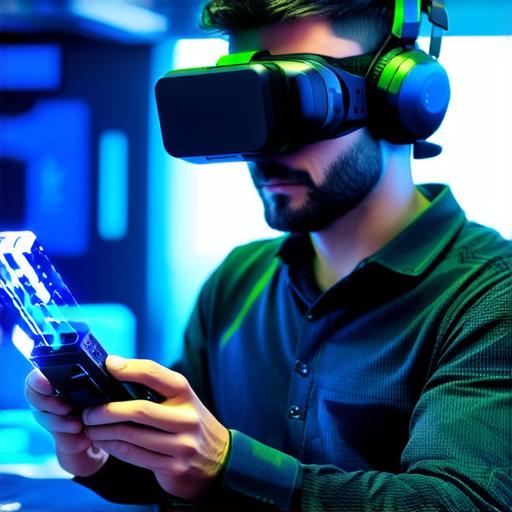1. Define Your Objectives
Before starting your VR project, it’s crucial to define your objectives. What do you want to achieve with your VR experience? Are you looking to entertain, educate, or train users? Defining your objectives early on in the development process will help you create a clear vision for your project and guide your decision-making throughout the development process.
2. Choose the Right Platform
There are several VR platforms available, including Oculus, HTC Vive, and PlayStation VR. Each platform has its own strengths and weaknesses, so it’s important to choose the right platform for your project. For example, if you’re looking to create a gaming experience, Oculus may be the best choice due to its large user base. If you’re looking to create an educational experience, HTC Vive may be the better option due to its support for room-scale environments.
3. Create an Engaging Storyline
An engaging storyline is essential for creating a successful VR experience. Your storyline should be immersive and take users on a journey through your virtual world. It’s important to keep in mind that users will be fully immersed in the experience, so it’s crucial to create a compelling narrative that will keep them engaged throughout the experience.
4. Optimize for Performance
VR experiences can be computationally intensive, so it’s important to optimize your project for performance. This includes minimizing load times, reducing frame rates, and avoiding sudden changes in environment or graphics that can cause motion sickness. It’s also important to test your VR experience on different devices to ensure it runs smoothly across all platforms.
5. Use Realistic Sound Effects
Sound effects are an essential part of creating a realistic VR experience. Using realistic sound effects can help create a more immersive environment and enhance the overall user experience. However, it’s important to be careful not to overdo it, as too many sound effects can be overwhelming and distracting.
6. Test and Iterate
Testing is an essential part of the VR development process. It’s important to test your VR experience on different devices and with different users to identify areas for improvement. Iterating on your project based on user feedback will help you create a better overall experience.
Case Study: “Beat Saber”
Beat Saber is a popular VR rhythm game that has been successful since its release in 2018. One of the reasons for its success is its engaging storyline, which takes users on a journey through a virtual world filled with music and dance. The game also optimizes for performance by minimizing load times and reducing frame rates, making it easy to play and navigate.
7. Choose the Right User Interface
The user interface (UI) is an essential aspect of VR development. It should be intuitive and easy to use, with clear instructions and prompts. The UI should also be designed with the VR experience in mind, taking into account the limitations of the technology and the potential for motion sickness.

8. Consider Accessibility
Accessibility is an important consideration when developing VR experiences. It’s essential to ensure that your experience is accessible to all users, including those with disabilities. This may include providing alternative input methods, adjusting the UI for readability, and ensuring that the experience can be navigated using a controller or other input device.
9. Keep in Mind Safety Concerns
Safety is a critical consideration when developing VR experiences. It’s important to ensure that your experience is safe for users, with appropriate warnings and instructions. You should also consider potential hazards such as trip hazards or obstacles in the virtual environment that could cause injury.
10. Stay Up-to-Date on Best Practices
Finally, it’s essential to stay up-to-date on best practices for VR development. This includes staying informed about industry trends and innovations, seeking feedback from users and peers, and continuously improving your skills and knowledge. Continuously learning and evolving will help you create more successful VR experiences in the future.
Conclusion
Developing a successful VR project requires expertise in several areas, including software engineering, user experience design, and game development. By following these expert tips for successful virtual reality development, you can create engaging and immersive VR experiences that will captivate users and drive business success.
